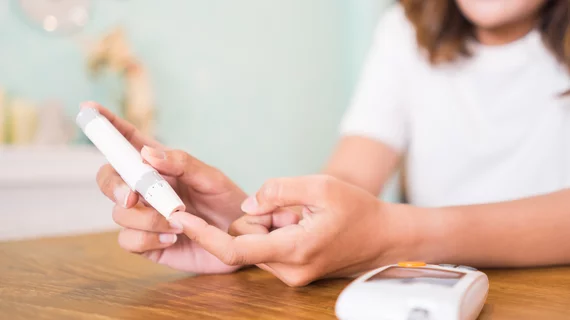High retail prices for diabetes test strips are driving a “gray market” in the U.S. as an increasing number of uninsured diabetics struggle to afford something they need as often as 10 times a day, the New York Times reports.
While some patients are able to manage their type 1 or type 2 diabetes using non-insulin medications or don’t need to test their blood sugar daily, the Times reported nearly one in seven diabetics still use test strips as a regular part of their routine. And for those who are uninsured or underinsured and are forced to pay out-of-pocket, the $164 price tag on a 100-count box of Freestyle Lite strips can be daunting.
That’s where the gray market emerged, targeting diabetics whose high deductibles or lack of insurance leaves them with few choices for monitoring their blood sugar. A pair of twins in Reading, Massachusetts, are among those who started soliciting and buying unused test strips from thousands of patients who’d bought them at a reduced price with insurance—a legal loophole—and reselling them at a price uninsured patients could afford.
For example, the brothers might buy a 100-pack of Freestyle Lite strips for $35 plus shipping and resell the box for $60—an attractive alternative to forking over $164 for the same product at CVS.
The wholesale price for test strips has risen as much as 70 percent in the last decade, and manufacturers argue they had to funnel money into making the strips smaller and more convenient to help more patients. Still, David Kliff, who publishes a newsletter on diabetes, estimated the typical test strip costs less than a dime to make.
“Test strips are basically printed, like in a printing press,” he told the Times. “It’s not brain surgery.”
Read the full Times story below:

